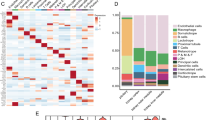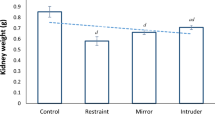Abstract
IT is generally believed that the action of pitressin, and more specifically, antidiuretic hormone, is entirely referable to its effects on the kidney. Although an extrarenal site of action has been suggested, the evidence has not been convincing1. Our recent studies in the rat suggested that pitressin might have an extrarenal action in this mammal2. This would agree with the findings in other vertebrate classes3.
This is a preview of subscription content, access via your institution
Access options
Subscribe to this journal
Receive 51 print issues and online access
$199.00 per year
only $3.90 per issue
Buy this article
- Purchase on SpringerLink
- Instant access to full article PDF
Prices may be subject to local taxes which are calculated during checkout
Similar content being viewed by others
References
Smith, H. W., “The Kidney: Structure and Function in Health and Disease”, 263 et seq. (Oxf. Univ. Press, New York, 1951).
Friedman, S. M., Webber, W. A., and Friedman, C. L., Canad. J. Biochem. and Physiol., 34, 475 (1956).
Heller, H., Experientia, 6, 368 (1950).
Ledingham, J. M., Clin. Sci., 12, 337 (1953).
Author information
Authors and Affiliations
Rights and permissions
About this article
Cite this article
FRIEDMAN, S., FRIEDMAN, C. & NAKASHIMA, M. An Extrarenal Effect of Pitressin. Nature 177, 1079 (1956). https://doi.org/10.1038/1771079a0
Issue date:
DOI: https://doi.org/10.1038/1771079a0



